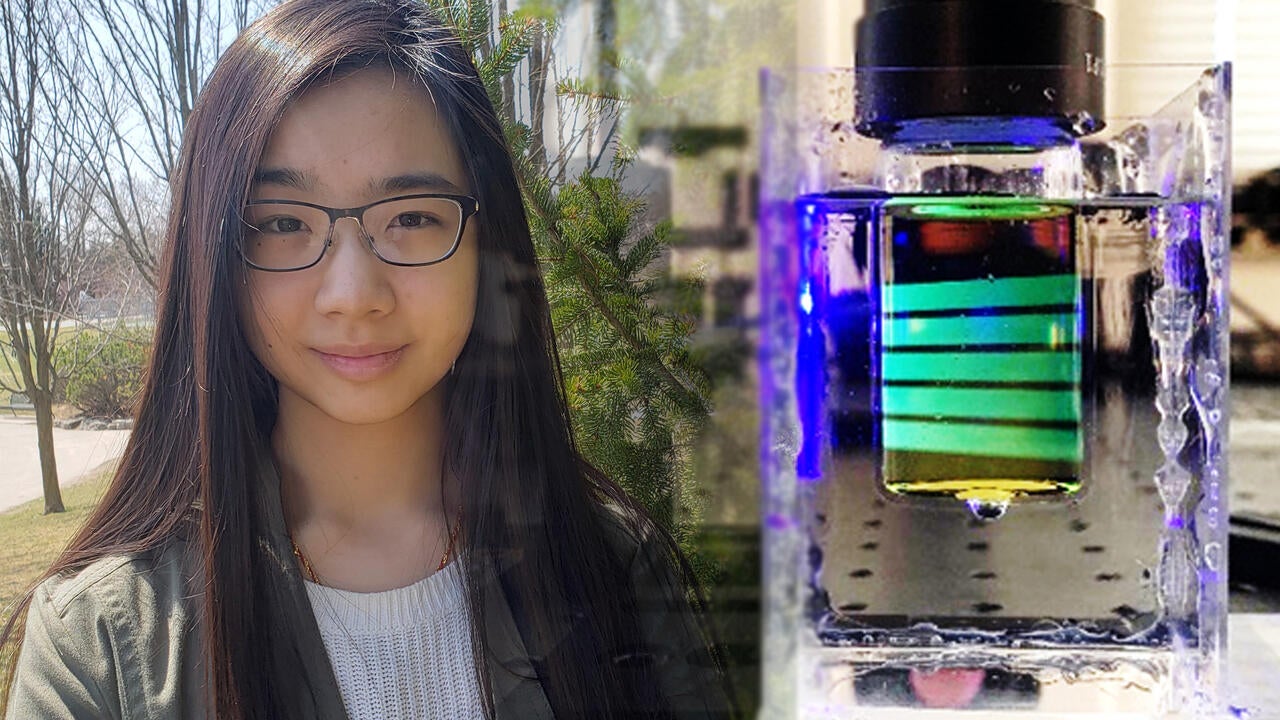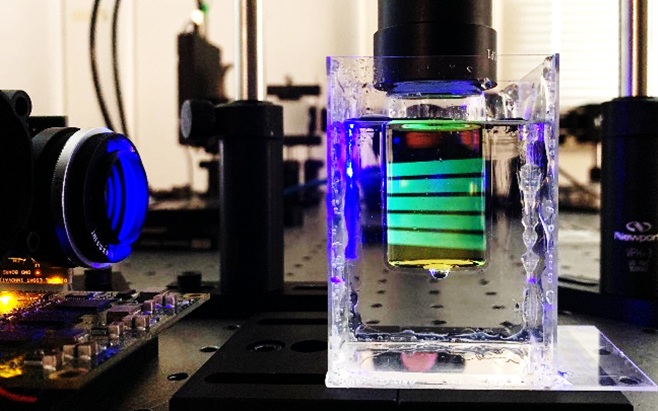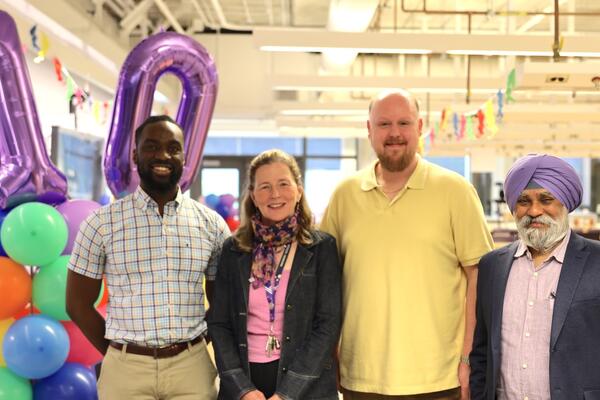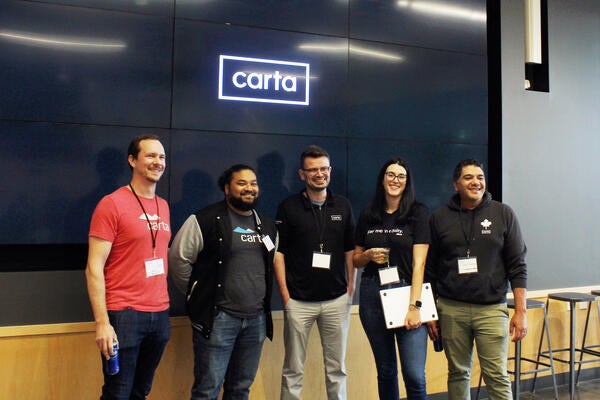
Making her mark in 3D
Engineering co-op student helps federal experts solve a messy high-tech printing problem

Engineering co-op student helps federal experts solve a messy high-tech printing problem
By Sonia Thomson National Research Council of CanadaTomographic 3D printing is a revolutionary technology that uses light to create three-dimensional objects. A projector beams light at a rotating vial containing photocurable resin, and within seconds the desired shape forms inside the vial. The light projections needed to solidify specific 3D regions of the polymer are calculated using tomographic imaging concepts.
The technology was first demonstrated by researchers at the University of California, Berkeley and Lawrence Livermore National Labs in 2019, and a Swiss group at École Polytechnique Fédérale de Lausanne (EPFL) in 2020. It is significantly faster than traditional 3D printing in layers, can print around existing objects, and does not require support structures.
Though incredible, the technology can get messy in the lab. The vial’s round shape makes it refract rays like a lens. To counter this, experts use a rectangular index-matching bath that provides a flat surface for rays to pass through correctly. The vial of resin must be dipped in and out of the bath for each use – creating a slimy situation.
It was slimy, that is, until a student from the University of Waterloo joined the National Research Council of Canada (NRC) for a virtual co-op term in 2020. Kayley Ting, who is doing a bachelor of applied science (BASc) degree in biomedical engineering, worked with machine vision and 3D printing experts from the NRC’s Digital Technologies and Security and Disruptive Technologies Research Centres.
Together they developed a technology that computationally corrects for optical distortions. New equations compensate for the vial’s round shape and eliminate the need for the goopy, square bath, while still enabling the nearly instant production of precise polymer shapes using light.

Now you see it, now you don’t: tomographic printing using the goopy index bath (above) and freed from bath (below). The green light in the vial is fluorescence – a by-product of the 3D printing process that conveniently highlights the path of light in the vial.

The team also developed new code to program the printer so that it could produce complex objects and be easily used by non-experts. They recently published their new method and findings in Optics Express, an open-access scientific journal, and revealed a few dazzling shapes they produced.
Due to COVID-19 pandemic restrictions, Kayley could not access the lab in Ottawa where objects are printed. But that didn’t stop her from innovating at a distance. To print complex objects using STL files, Kayley wrote the code that imports the 3D object file, slices it, and converts 2D slices to the light projections that will be shone on the vial. Intensive computations are required at this step.
“While it used to take about an hour to process a print file, Kayley’s version of the code usually takes less than a minute to execute,” says Antony Orth, research officer from Digital Technologies and Kayley’s supervisor.
The progress made by Kayley during her virtual work term at the NRC will have practical applications in the future.
“Kayley also produced a simple user interface with buttons and menus that enables people to use the printer without knowing how to code. This is a huge deal for us as it will make the technology much more usable at the NRC and for others interested in tomographic 3D printing,” says Chantal Paquet, research officer from Security and Disruptive Technologies.
Each year, the NRC welcomes over 300 co-op students to work alongside leading experts. Students bring fresh ideas and tremendous energy for project execution, helping NRC experts advance cutting‑edge research, while NRC experts provide coaching, advice, experience, mentorship, direction, and (in non-pandemic times) access to research infrastructure in industrial settings, helping students reach their scientific and professional goals more rapidly and in a supportive environment.
“During my co-op term, I was able to apply concepts from physics, math and computer science, and felt I could have a tangible impact on a project with a variety of real-world applications,” Kayley says. “I'm so grateful to have had this opportunity, and to receive mentorship from accomplished researchers at the NRC.”
Kayley plans to complete her bachelor's degree in biomedical engineering in 2023, and hopes to pursue graduate studies in simulation engineering or medical robotics.
"This is a terrific example of how our students and employers like the NRC both benefit from our co-op program," says Mary Wells, the dean of Waterloo Engineering. "I'm proud of the contributions talented students like Kayley make as they work towards their degrees in the real world as well as the classroom."

Read more
Here are the people and events behind some of this year’s most compelling Waterloo stories

Read more
The Pearl Sullivan Engineering IDEAs Clinic marks a decade of delivering experiential learning embedded in the real world and mentored by industry professionals

Read more
From AI-powered cap tables to complex valuation tools, Waterloo co-op students drive Carta’s innovation while shaping its engineering talent strategy
The University of Waterloo acknowledges that much of our work takes place on the traditional territory of the Neutral, Anishinaabeg, and Haudenosaunee peoples. Our main campus is situated on the Haldimand Tract, the land granted to the Six Nations that includes six miles on each side of the Grand River. Our active work toward reconciliation takes place across our campuses through research, learning, teaching, and community building, and is co-ordinated within the Office of Indigenous Relations.